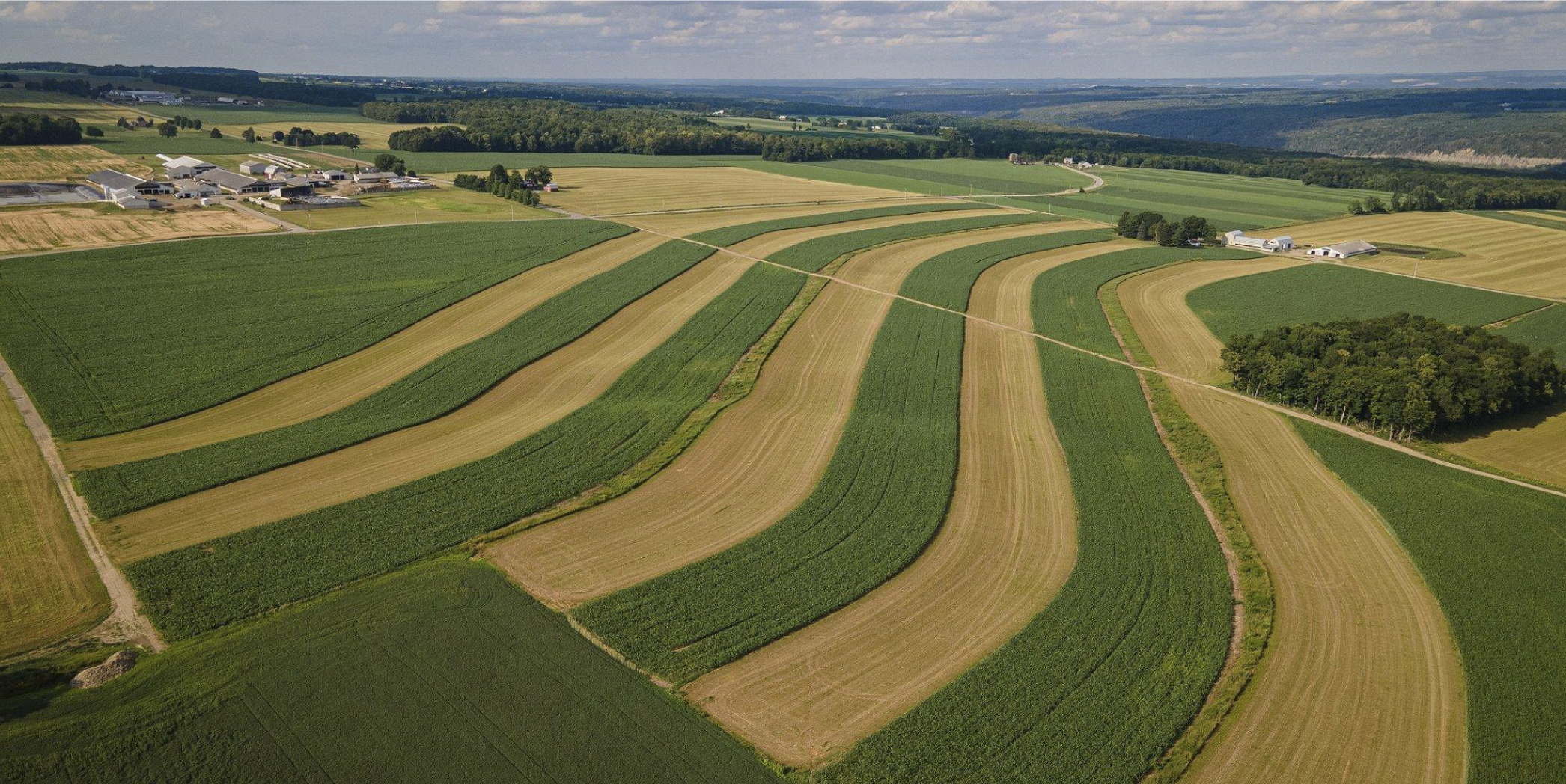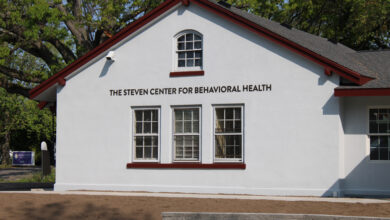New York Outcomes Fund surpasses 10,000 acre goal for regenerative agriculture

Launched in January 2023, the New York Outcomes Fund is a groundbreaking initiative focused on accelerating the adoption of regenerative agriculture in New York’s Great Lakes region. The pilot program has enrolled 10,000 acres across 25 growers in Western and Central New York, including Monroe County.
The project is led by the Cornell Atkinson Center for Sustainability in partnership with Cargill, the New York Corn and Soybean Growers Association, Cornell Extension, and the Soil and Water Outcomes Fund. The Outcomes Fund responds to a crucial question in sustainable agriculture: How can innovative financial solutions accelerate the adoption of regenerative agriculture?
This is the question that project lead and Cornell Atkinson’s Senior Manager of Strategic Partnerships Alan Martinez — along with a team of Cornell faculty and student researchers, Cornell Cooperative Extension partners, and a national advisory group — have been working to address in the two years leading to the project’s launch. Through the course of their research, the team identified over 200,000 acres across New York State that had the potential to transition to regenerative farming practices, which could generate significant soil health, climate, water quality, and biodiversity benefits.
With funding from the Great Lakes Protection Fund and Cargill, the project team designed a pilot program in early 2023 that aimed to support New York farmers in their efforts to adopt regenerative practices, such as cover crops and reduced tillage, through a combination of transition funding and agronomic support.
Moving from Research to Impact
Aligning with Cornell Atkinson’s commitment to moving research to real-world impact, the New York Outcomes Fund pilot specifically measures carbon reductions and removals as well as water quality improvements, such as lowered nitrogen and phosphorus runoff.
The team initially aimed to enroll 1,000 acres in the pilot. With additional support from Cargill, the New York Outcomes Fund was able to increase its enrollment target to 10,000 acres, a goal it surpassed at the end of 2023.
Martinez explained that the first year is a crucial step in testing the program’s potential and efficacy.
“Very few growers knew what regenerative agriculture was three years ago when we began. A year ago, I asked a room full of growers if any of them were engaged in any environmental markets and not one hand went up. In that time, we’ve seen an incredible shift in interest and investment at a global, national, and regional level. Our program presents an exciting and proven way for the public and private sectors to work together with growers to address how agriculture can work better for communities and the planet. These efforts demonstrate that we can reach a tipping point where more farmers are able to start and scale conservation farming in New York State.”
The Outcomes Fund estimates that the 25 enrolled producers will generate approximately 6,000 metric tons of greenhouse gas reductions and removals, more than 110,000 pounds of nitrogen reductions, and more than 5,500 pounds of phosphorus reductions through newly adopted conservation practices.
One of the biggest hurdles for farmers who want to adopt conservation practices is capital. This is where the New York Outcomes Fund makes a difference, providing not only the necessary financial resources but also technical assistance from the project’s partners and experienced agronomists.
“We start the process through conversations with farmers to better understand their conservation objectives,” Martinez said. “Interested growers share historical and projected field management data on specific fields. Then we agree on a transition plan and generate a flexible agreement to transition or scale regenerative practices.”
After enrollment, farmers receive an agreement that estimates environmental benefits and a financial payment based on the number of acres enrolled. Enrolled growers receive a 50% upfront outcomes payment based on the estimated reduction or removal of greenhouse gasses, nitrogen, and phosphorus. With this support, growers can implement conservation practices and receive access to technical assistance as needed. After the crop year is complete and outcomes are verified, growers receive the remaining payment. Payments to farmers participating in the pilot ranged from $23 to $37 per enrolled acre.
Support For Growers
Notably, the partnerships with the New York Corn and Soybean Growers Association and Cornell Cooperative Extension contribute to the program’s effectiveness by providing outreach and technical support for the program.
Technical assistance could include helping farmers implement new practices, such as reduced tillage, develop crop rotation plans, or find cover crop information and resources.
“The leadership at the farmer-led New York Corn and Soybean Growers Association has been critical in co-creating a program that is built for farmers by farmers,” Martinez said.
With the support of all program partners, enrolled farmers can take important steps toward greater adoption of regenerative agriculture practices. On the ground this means minimizing soil disturbance, maximizing crop diversity, keeping the soil covered, maintaining living roots year-round, and, for the dairies in the program, integrating livestock.
“At a broad level, it’s clear that collaboration across the agriculture sector is necessary for innovation and scale. But if we start with the needs of farmers, our sustainability investments will have a greater chance of success,” Martinez said. “It is encouraging to see the support of the private sector, innovators like the Soil and Water Outcomes Fund, growers, educators, and conservationists.”
Scalability and Future Steps
Looking ahead, the team is seeking partners interested in building a pathway to scale, exploring the relevance of pay-for-performance for other agricultural sectors (such as dairy), and researching the potential for other environmental markets, including biodiversity. Martinez highlights the importance of aligning with state and federal conservation efforts, emphasizing the project’s potential to contribute to broader sustainability goals.
“If we want to unlock the potential for this work, we need to align with what the state and federal governments are doing. That’s something that I’m working on today, and I’m very grateful to the conservation leaders in New York that they want to explore these topics,” Martinez said. “The question is, how do we take that next step to make sure that this program supports the ambitions that New York State has to improve the sustainability and resilience of agriculture?”
The New York Outcomes Fund has the potential to influence policy discussions at state and federal levels, especially as the federal Farm Bill will further the momentum toward building climate-resilient farms.
With more than 200,000 acres of potential New York farmland, and the Outcomes Funds’ engaged farmer-led model, the possibility for scale is evident. With its unique financial solutions, strong partnerships, and commitment to environmental outcomes, the project exemplifies the potential for positive change in the agriculture sector. As the pilot progresses, the New York Outcomes Fund may serve as a model for sustainable, scalable, and impactful initiatives in regenerative agriculture.
“Climate-smart and regenerative agriculture has garnered a lot of attention since we launched this project. And we see that there’s more to do — there’s more innovation needed to address the challenges farmers face when changing practices,” Martinez said. “But as we complete our first year, we are celebrating the success of a pilot that pays farmers for science-based environmental outcomes and leverages the strengths of so many different partners in a unique way for New York agriculture.”
To learn more about the New York Outcomes Fund, visit http://www.nyoutcomesfund.com.
Provided information and photo





